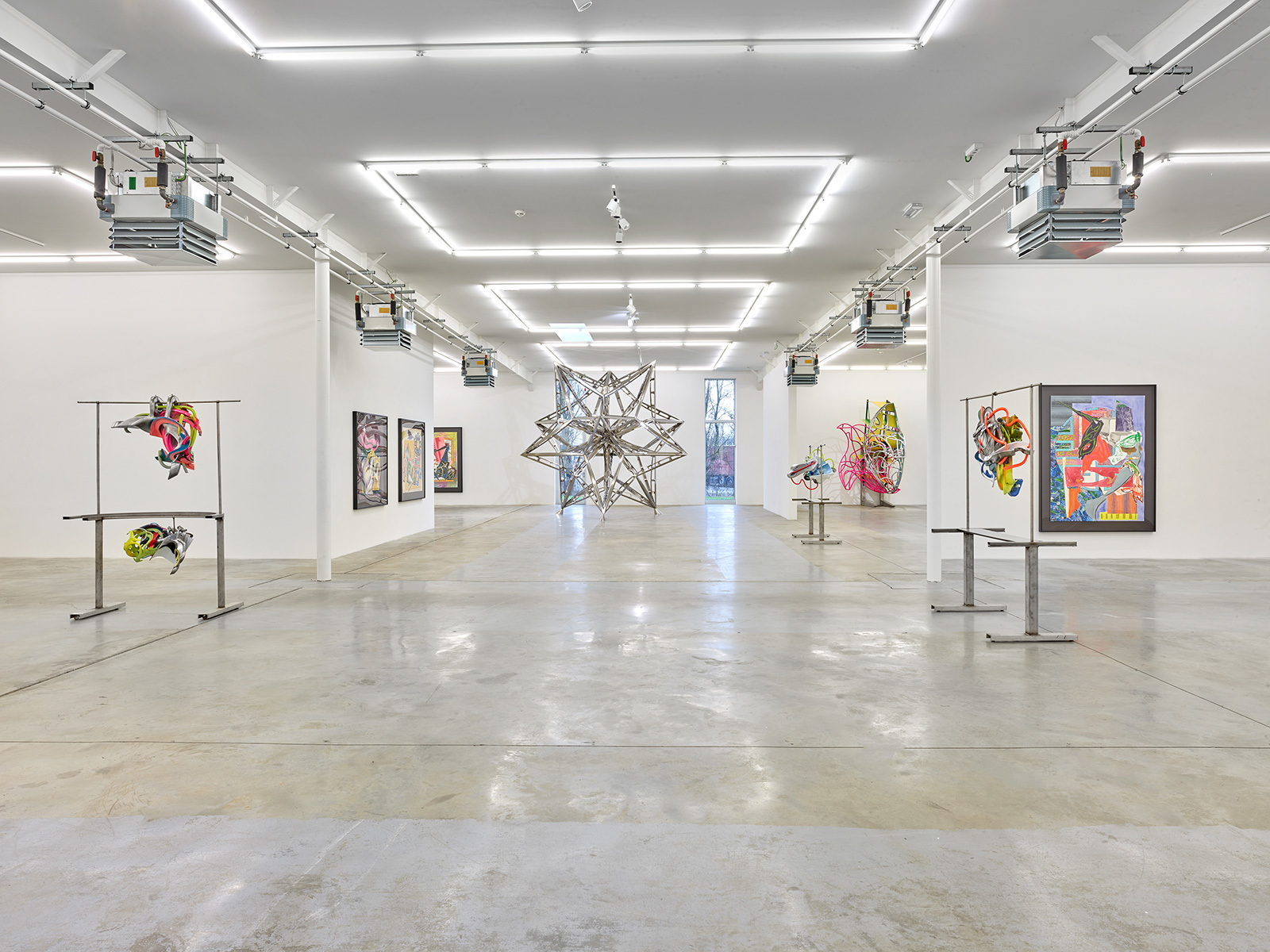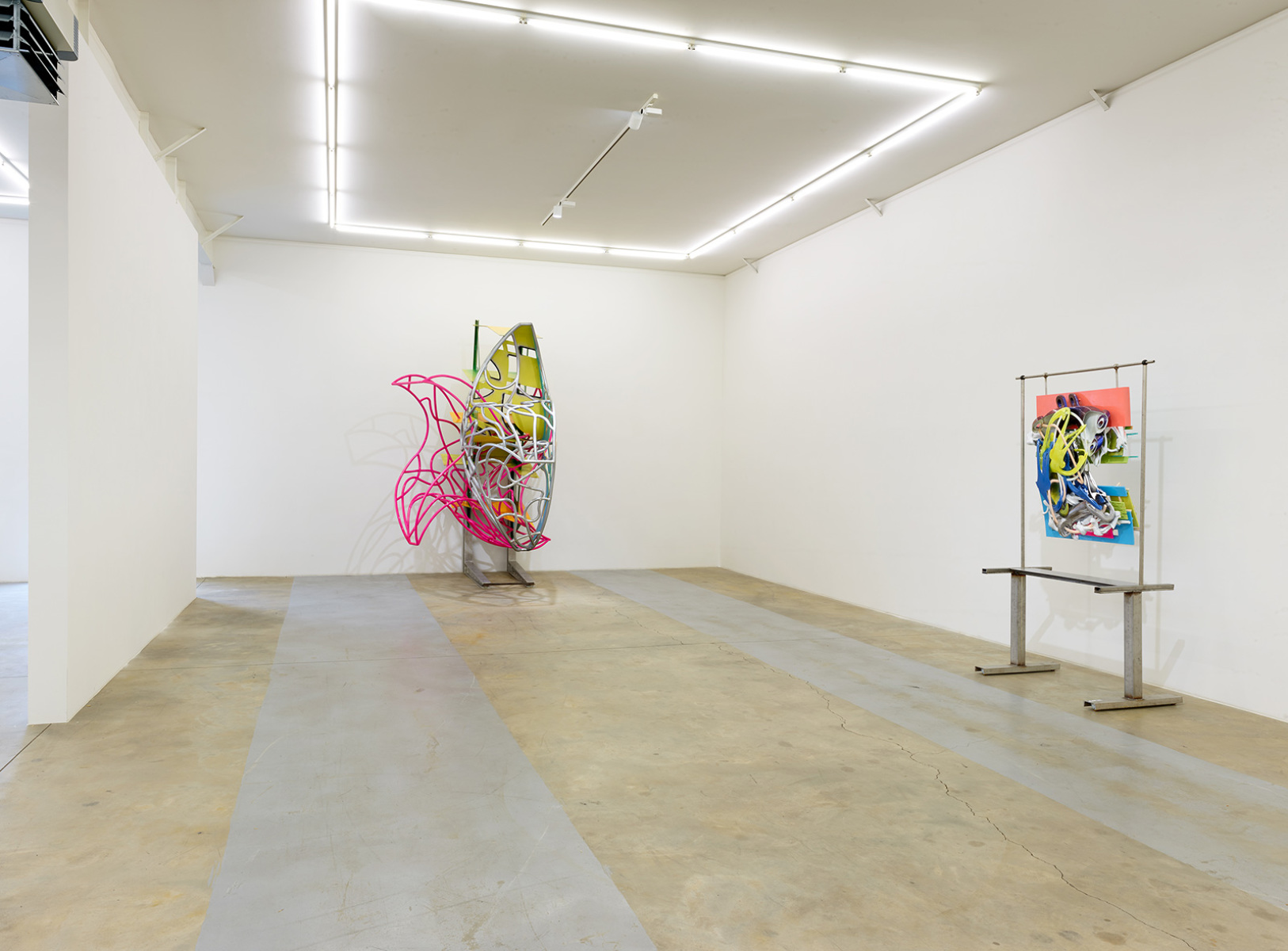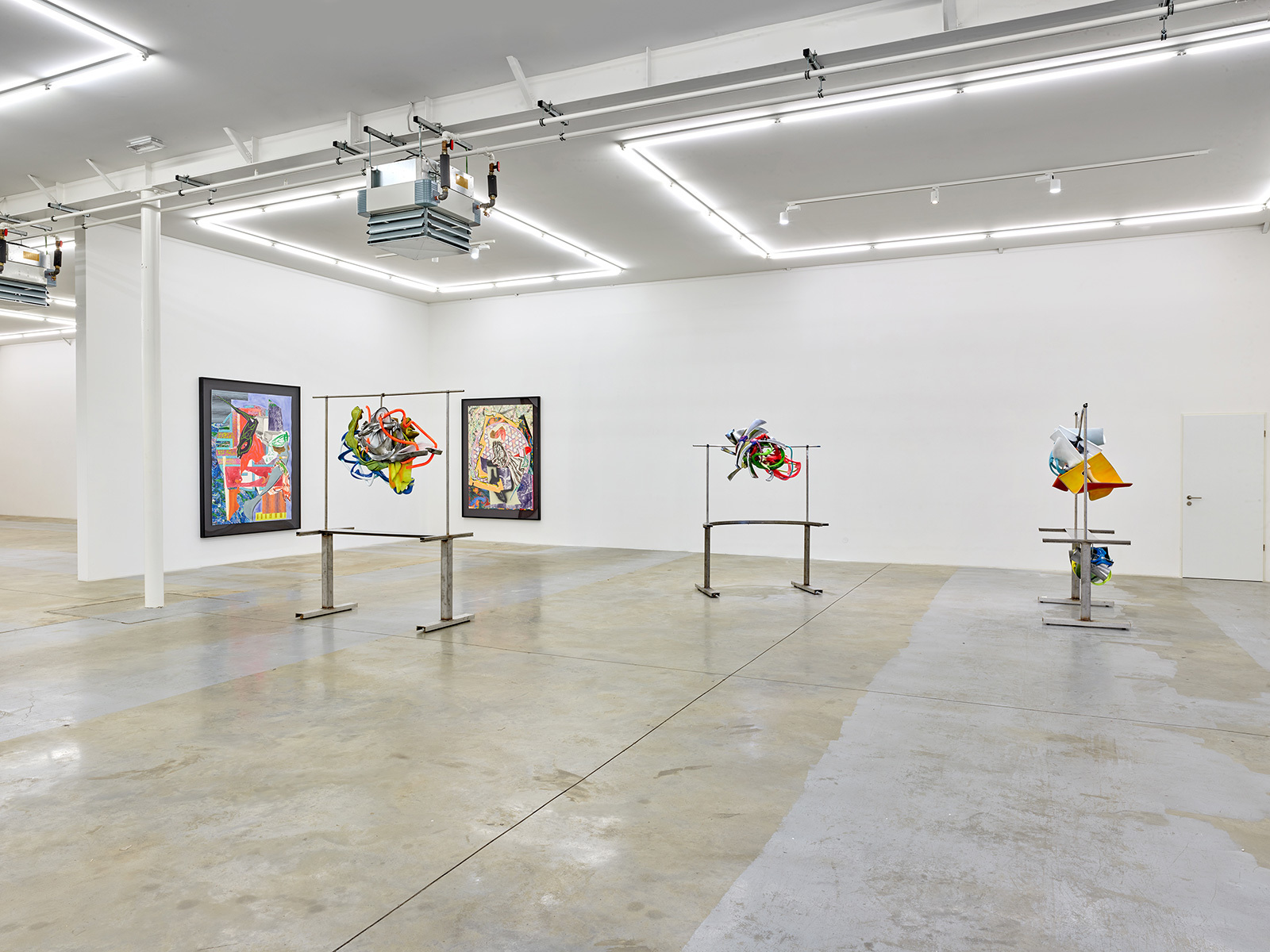Frank Stella
Salmon rivers of the Maritime Provinces
March 05 - May 07, 2022
Frank Stella
Salmon rivers of the Maritime Provinces
March 05 - May 07, 2022
Frank Stella, Salmon rivers of the Maritime Provinces
Excerpt from a longer essay to be published on this series…
This exhibition presents a brand-new series of artworks created in 2020 that changes the perspective on Frank Stella’s work while underlining the continuity of the intentions he has expressed with a rare determination since the end of the 1950s. With it, the artist rethinks, renews, and reinvents modern legacy, which might be more fecund than one thought or believed.
Frank Stella stopped painting strips a while ago, but kept wanting to rival with old masters. He keeps wanting to be Velasquez and the emulator of Caravaggio! In a certain way, this is why he continues to paint strips. What I mean is that Stella wants to be of his time, with the means of his time, and, as Picasso did in his own way, to bring his own “solution” to the deceptions caused by the exhaustion of abstraction mired in the dirt of habits and complacency. This is why he constantly needs to renew and invent, and to this end, break with what lingers, wears out and grinds to a halt, even in his own work space…
Frank Stella has indeed been the inventor of a certain minimal art, and of what was called “hard edge” paintings. He gave the model for it, and, without abandoning it or casting it aside, he abstained from indulging in a redundancy emptied of its pith and marrow. The works here exhibited are proof of it. Yet Stella’s work can no longer be summarized by his great royal statement: ”what you see is what you see”…
The works of the Salmon rivers of the Maritime Provinces series are suspended on strange display stands, as if to complete this foreshadowed departure of the forms from the pictorial framework and the wall on which they leaned or were hung while making visible a necessary relationship to a supporting partition. Yet the strong aura of Monel Star, created in 2017, harbingers that these already levitating artworks, freed from the spatiality of their framework, and displayed on the ground, could only exhibit their materiality as a content-to-become: that of an extensive architecture postulating the advent of a new geometry that would transgress the Euclidean normativity still exhibited in the post-cubist abstract space.
Each of the nine variations of this “series” is named after a place, whether a river or a lake of Gaspesia, a region of Quebec, the land of the Algonquins, the Micmacs, and then the Acadians. We owe to these nations and people the savory names that now evoke rivers, lakes and recreational fishing spots highly thought after by the aficionados of such activity: Grande Cascapedia, Bonaventure, Miramichi, Restigouche, Upsalquitch, Kedgwick, Cains. Stella entitled his works in tribute to his trip in New Brunswick, and possibly in memory of a fishing excursion with his father, also recalled through the Hudson River Valley lithograph portfolio.
Their hanging device therefore works somewhat like a carpenter’s bench, underlining the shapes and materials -as well as colors- of the works that such displays place in an indefinable space that distort the framework of the Euclidean and Albertian space. They deconstruct them and thrust them into a deep abyss. Here we imagine that Stella, as Caravaggio did with Tuscan and Venetian art, moved by his enthusiasm for pictorial surface, pictoriality and the exuberant volumes of unclassifiable artworks, has engulfed and cast in abysmal oblivion, in keeping with Barnett Newman’s proposal in Euclidean Abyss (1946-1947), the old concepts of modernity.
Thus asserting their pictorial spatiality, these works more powerfully exhibit their independence as well as what sets them apart from all labeling: are they painting? No! Sculptures? Neither, but… A comparison reinforced by their surface, their “skin”, which seems smoothed by their polychromatic shine -it would be improper to call “pop”. The latter evokes not only the light and vibrant tints of Annibale Carracci, Tiepolo, Andrea Pozzo and his cotton smooth candy-like ascending swirls of clouds, but even more so the sometimes peeled and scratched polychrome of dented, compacted car body sheets carefully chosen and brutally compressed by Chamberlain.
What Frank Stella wants to tell us is that, like Cezanne making great painting and art for museums, laboring on landscapes and still lives, works of minor genres, Frank Stella, with what could be considered still lives, the works of Salmon rivers, rekindles a pictorial tradition that finally reaches its actuality, its pictorial actuality, since, by negating perimeter and surface, it accomplishes “its own destiny”…
As for the masterpiece Monel Star (2017), what could we say about it? First, that this unprecedented monumental star is made of milled extrusions of this new metal called Monel, an alloy made with a nickel highly resistant even to the worst corrosion risks, and perfectly suited to the demands of aerospace. And then, that it captures the meaning of the exhibition: “from the moment it creates its own space, painting frees itself from architecture and directly competes with it for the control of the available space.” And that it echoes back to Stella his famous apothegm: “What you see is what you see”.
Bernard Ceysson














